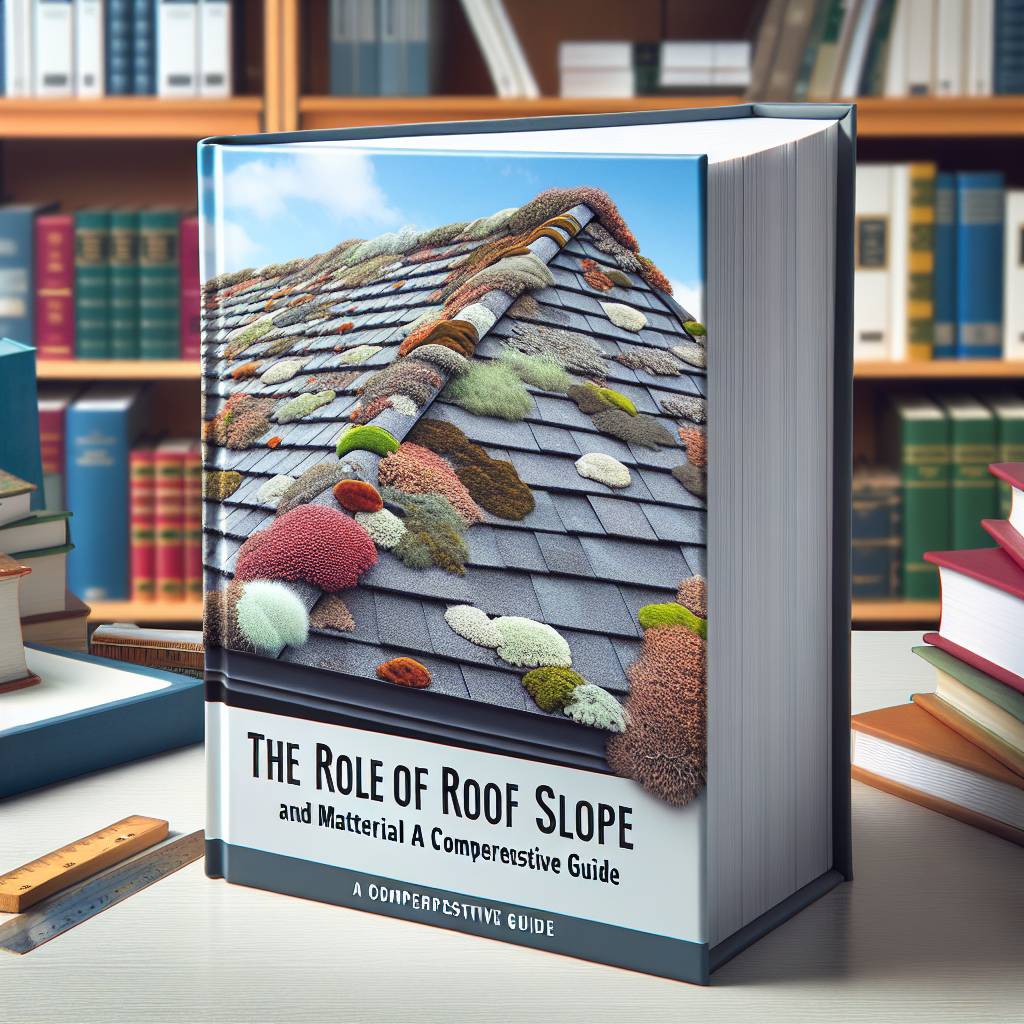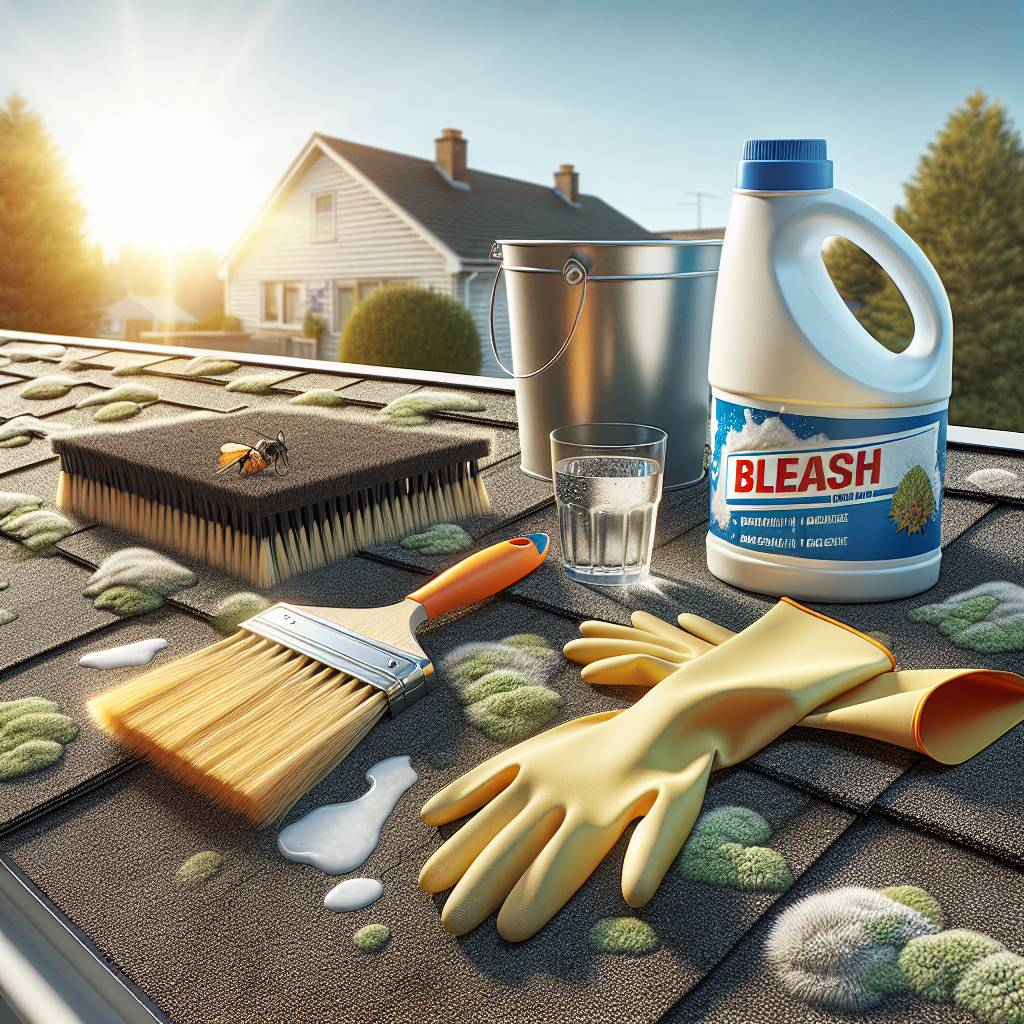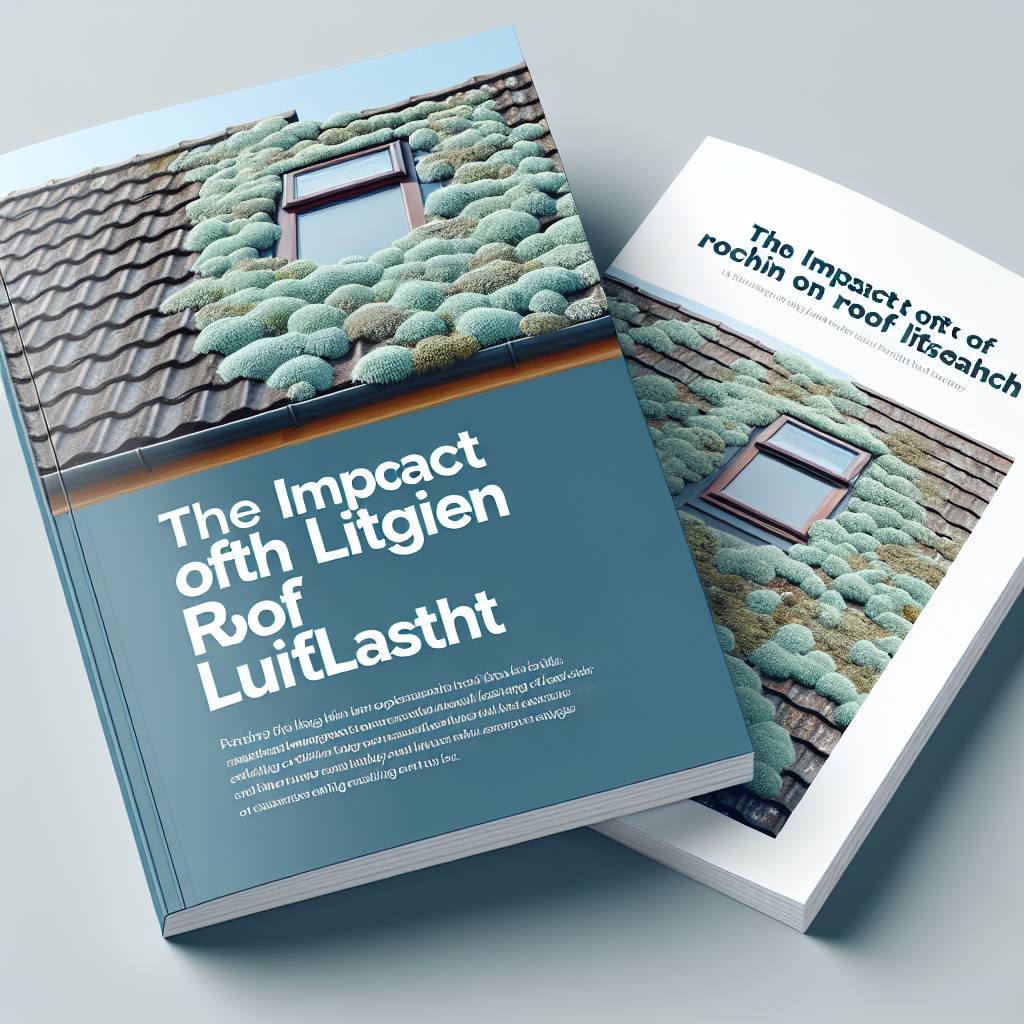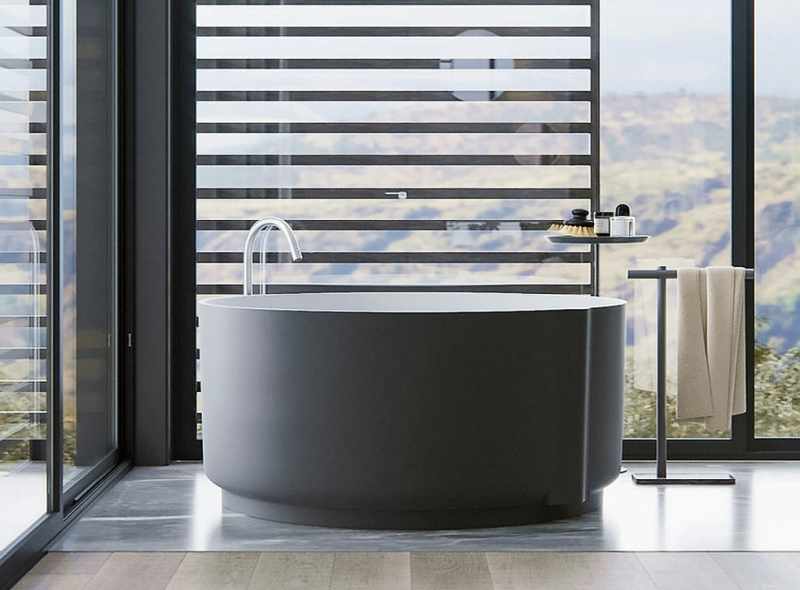Lichen growth on roofs can be influenced by various factors, with roof slope and material playing a significant role. While some roofing materials may foster lichen growth due to their texture or composition, others may inhibit it. The angle of the roof slope affects moisture retention, which is a key factor for lichen colonization. Understanding how the sun, orientation, and photographs interact can help homeowners and property managers make informed decisions about roof maintenance and material selection.
Roofing professionals and homeowners alike must grasp the impact of roof slope, material, sun orientation, and rock on lichen proliferation to effectively manage this issue. By exploring the relationship between these factors, we can gain insights into preventing or mitigating lichen growth on roofs while maintaining their structural integrity.
Key Takeaways
- Regularly inspect your roof for lichen growth, especially on materials like asphalt shingles and wood, as these are more susceptible to colonization.
- Consider the slope of your roof, as steeper slopes discourage lichen growth by shedding moisture and reducing the time lichens are in contact with the surface.
- Maximize sunlight exposure to your roof, as lichens thrive in shaded areas and are less likely to proliferate in well-lit environments.
- Promptly identify and assess any lichen damage on your roof to prevent further deterioration and potential structural issues.
- Use appropriate methods, such as gentle brushing or low-pressure washing, to safely remove lichen and moss from your roof without causing damage.
- Implement preventive measures like trimming overhanging branches and installing zinc or copper strips to inhibit future lichen growth.
Identifying Lichen on Different Roofing Materials
Various Roofing Materials
Lichen can be found on different roofing materials such as asphalt shingles, wood shakes, and metal roofs. Each material, including roof, provides a unique surface for lichen to grow. For example, asphalt shingles offer a rough surface with many nooks and crannies where lichen can take hold. On the other hand, metal roofs provide a smooth surface that may deter lichen growth compared to other materials.
Different types of lichen may appear differently on these various roofing materials due to their texture and composition. This makes it essential to understand how lichens manifest themselves on each type of material, including roof life, in order to accurately identify them.
Importance of Identification
The presence of lichen on a roof is an important indicator that should not be overlooked. It can signal the need for maintenance or even potential damage to the roofing material itself. For instance, if lichen is left untreated on an asphalt shingle roof, it can lead to deterioration over time as the roots penetrate and weaken the shingle structure.
Identifying the specific type of lichen growing on a particular roofing material is crucial for determining appropriate treatment methods. Some types of lichen are harmless while others could pose significant risks if not addressed promptly.
Visual Differences
Visual differences in how lichen appears across different roofing materials are evident when comparing wood shakes with metal roofs or asphalt shingles. Wood shakes tend to have more crevices and rough surfaces compared to metal roofs which have smoother surfaces with fewer areas for moisture retention – making them less conducive for extensive lichen growth.
When inspecting roofing materials like asphalt shingles, one might notice patches or spots with greenish discoloration indicating possible lichen infestation. In contrast, examining wood shakes might reveal fuzzy or hair-like structures characteristic of certain types of lichens commonly found growing there.
Maintenance Considerations
Understanding how specific types of lichens interact with different roofing materials also aids in formulating effective maintenance strategies. Regular cleaning and maintenance practices tailored according to specific material-lichen interactions help prevent excessive accumulation which could potentially compromise the integrity of the roof over time.
The Role of Roof Slope in Lichen Colonization
Impact on Lichen Growth
Roof slope plays a crucial role in lichen colonization. Steeper slopes are less conducive to lichen growth due to increased water runoff. This prevents moisture from accumulating, creating an environment that is less favorable for lichens. On the other hand, flat or low-slope roofs retain moisture for longer periods, providing an ideal setting for lichen growth. The stagnant water on these surfaces becomes a breeding ground for lichens, promoting their colonization and proliferation.
Lichens thrive in moist environments, making flat or low-slope roofs particularly susceptible to infestation. The prolonged retention of moisture encourages the establishment and spread of lichens across the roof surface. Homeowners and professionals should be aware of this relationship between roof slope and lichen growth, as it helps them anticipate potential issues with different types of roofs.
Understanding how roof slope influences lichen colonization enables proactive measures to be taken against infestations. For instance, homeowners with flat or low-slope roofs can implement regular maintenance practices such as cleaning and removing debris to minimize moisture retention. Professionals involved in roofing construction can advise clients on suitable materials and designs based on the expected impact of roof slope on lichen growth.
Practical Implications
The knowledge about the influence of roof slope on lichen colonization has practical implications for various stakeholders. Homeowners can make informed decisions when selecting roofing materials based on their local climate conditions and desired maintenance requirements. For example, those living in regions with high precipitation may opt for steeper roof slopes to mitigate excessive water accumulation that could lead to lichen infestation.
Professionals engaged in architectural design and construction can utilize this understanding to recommend appropriate roofing solutions tailored to specific environmental factors like rainfall patterns and humidity levels. By factoring in the relationship between roof slope and lichen growth during the planning phase, they contribute towards creating structures that are more resilient against biological deterioration caused by organisms like lichens.
Impact of Sunlight Exposure on Lichen Proliferation
Sunlight’s Influence
Sun exposure significantly affects the growth of lichen on roofs. Ample sunlight creates unfavorable conditions for lichen proliferation, limiting its growth. Direct sunlight inhibits lichen colonization due to the harsh environment it creates.
Lichens require suitable conditions for growth, which shaded areas provide by offering less sunlight and higher moisture levels. These favorable conditions make shaded spots more prone to lichen colonization.
Shaded areas on roofs create an ideal environment for lichen, promoting its proliferation due to reduced direct exposure to the sun and increased moisture retention. This makes such regions vulnerable to extensive lichen growth compared to sun-exposed areas.
Recognizing and Assessing Lichen Damage on Roofs
Identifying Lichen Damage
Lichen damage on roofs can be identified through discoloration, pitting, or surface deterioration of the roofing material. These signs are crucial indicators of lichen presence and potential harm to the roof’s integrity. For instance, if you notice green or black patches on your roof, it could be a sign of lichen growth. Spatter marks may also appear due to lichen activity.
Regular inspections for these signs are essential in detecting lichen-related problems early. By conducting thorough examinations and taking photographs of any visible damage, homeowners can accurately assess the extent of lichen growth on their roofs.
Assessing Extent of Damage
Assessing the extent of lichen damage is vital as it determines whether repairs or even complete replacement is necessary. If left unchecked, extensive lichen growth can cause significant harm to the roof structure over time. Therefore, timely assessment and intervention are crucial in preserving the roof life.
When inspecting for lichen damage, look out for any images that indicate discoloration or surface deterioration caused by prolonged exposure to lichens. It’s important to recognize that such issues might not always be visible from ground level; therefore, climbing onto the roof or using a drone for aerial photography can provide better insight into potential damages.
Methods for Removing Lichen and Moss from Roofs
Pressure Washing for Effective Removal
Pressure washing with appropriate cleaning solutions is a highly effective method to remove lichen and moss from roofs. This process involves using a high-pressure water spray along with environmentally friendly cleaning solutions to dislodge and wash away the lichen colonies. For instance, if your roof has asphalt shingles, pressure washing can be an efficient way to remove lichens without damaging the shingle material. However, it’s crucial to ensure that the pressure setting is suitable for the specific roofing material and slope to avoid any potential damage.
Another approach is manual scraping or brushing, which can be particularly useful for smaller areas of lichen growth on roofs. When dealing with localized lichen infestations, gently scraping or brushing off the lichens can help prevent them from spreading further across the roof surface. It’s essential to exercise caution during this process so as not to cause any harm to the underlying roofing material. For example, when manually removing lichens from metal roofs, using soft-bristled brushes will prevent scratches while effectively eliminating the growths.
Chemical Treatments for Targeted Removal
Chemical treatments specifically designed for lichen removal offer another viable method for eliminating lichen colonies from roofs. These treatments typically consist of specialized formulas that are applied directly onto the affected areas of the roof where lichens are present. Once applied, these chemicals work by breaking down and killing off the lichen organisms over time without causing harm to most roofing materials when used according to instructions provided by manufacturers.
In some cases, certain chemical treatments may require multiple applications over several weeks before significant results become apparent due to varying environmental conditions affecting their efficacy on different types of roofing materials and slopes.
Strategies for Preventing Future Lichen Growth
Regular Maintenance
Regular roof maintenance is crucial in preventing future lichen growth. This includes cleaning gutters and removing debris to minimize moisture retention, which creates an environment conducive to lichen colonization. By keeping the roof clean and free of organic matter, you can significantly reduce the likelihood of lichen taking hold.
It’s important to engage in routine inspections to identify any potential issues early on. Any signs of moss or algae should be promptly addressed as they can also contribute to moisture retention and provide a breeding ground for lichens. By staying proactive with regular maintenance, homeowners can effectively combat future lichen growth on their roofs.
Installation of Zinc or Copper Strips
Another effective strategy is installing zinc or copper strips along the roof ridge. These metals possess natural antimicrobial properties that inhibit lichen colonization. As rainwater runs over these strips, it carries trace amounts of zinc or copper onto the roof surface, creating an inhospitable environment for lichens.
This method offers a long-term solution as these metal strips continue to protect the roof from microbial infestations over time. Homeowners looking for sustainable ways to prevent future lichen growth will find this strategy particularly beneficial due to its durability and effectiveness.
Trimming Overhanging Tree Branches
Trimming overhanging tree branches near the roof is another practical approach in discouraging lichen growth. Overhanging branches not only create shade but also impede proper airflow across the roof surface, fostering conditions favorable for lichens to thrive.
Comparing Lichen and Moss Effects on Roof Integrity
Impact on Roof Integrity
Lichens have minimal impact on roofs, unlike moss, which can cause significant damage. Moss retains more moisture, leading to potential structural harm if left untreated. Both lichens and moss must be promptly addressed to prevent roof leaks and prolonged damage.
Lichens are less damaging to the structural integrity of roofs compared to moss. Their minimal impact makes them less likely to cause significant harm or lead to costly repairs when compared with moss growth. Conversely, the ability of moss to retain moisture poses a higher risk of causing substantial damage by weakening roofing materials over time.
Moss has a greater capacity for retaining moisture than lichens do. This characteristic allows it to create an environment that is conducive for prolonged dampness, potentially resulting in rotting or other forms of degradation in roofing materials if not properly managed. On the other hand, while lichens may not pose an immediate threat like moss does, addressing their presence promptly is crucial in preventing future issues.
Addressing Lichen and Moss Growth
When dealing with lichen growth on roofs, it’s essential to consider the role that roof slope plays in its development. A steeper slope promotes better water runoff, reducing the likelihood of excess moisture buildup that could encourage lichen growth. Certain roofing materials may be more resistant or susceptible to lichen colonization based on their composition and surface characteristics.
Roof slope affects how water drains from the surface; therefore, adjusting this aspect can help mitigate excessive moisture retention conducive for lichen growth. For instance:
- Steeper slopes promote efficient water runoff
- Shallower slopes might allow water accumulation
Different roofing materials also play a role in either facilitating or inhibiting lichen colonization due to variations in their composition and texture.
Building Orientation and Its Effects on Lichen Infestation
Building Orientation
Buildings with north-facing roofs are more prone to higher lichen infestation. This is because these roofs receive less direct sunlight, creating a favorable environment for lichen growth. On the other hand, south-facing roofs receive ample sunlight, making them less conducive to lichen development.
Understanding the impact of building orientation on lichen growth is crucial for homeowners. It helps them anticipate potential patterns of lichen infestation based on their roof’s orientation. Armed with this knowledge, homeowners can take proactive measures to prevent or mitigate lichen growth on their roofs.
For instance, if a homeowner has a north-facing roof that is susceptible to high levels of lichen infestation due to reduced sunlight exposure, they may consider implementing preventive strategies such as regular cleaning or choosing specific roofing materials that discourage lichen growth.
Roof Slope and Material
In addition to building orientation, the slope and material of the roof also play significant roles in influencing the growth of lichens. A steeply sloped roof tends to shed moisture more effectively than a flat one. This prevents water from accumulating on the surface, which can create an environment conducive to lichen colonization.
Furthermore, certain roofing materials may be more resistant to lichens compared to others. For instance, metal roofs are less likely to harbor extensive amounts of lichens compared to asphalt shingles due to their smooth surface and resistance against moisture retention.
Considering these factors when selecting roofing materials and determining the slope during construction or renovation projects can help minimize potential issues related to excessive accumulation of lichens on rooftops.
Final Remarks
You’ve now gained a deeper understanding of how roof slope and material influence the growth of lichen. By recognizing the impact of sunlight exposure, building orientation, and different roofing materials on lichen colonization, you’re better equipped to identify, assess, and prevent lichen infestation on roofs. Remember, regular maintenance and proactive measures can significantly mitigate lichen damage, preserving the integrity of your roof for years to come.
Now it’s time to put your newfound knowledge into action. Take a closer look at your roof, consider its slope, material, and exposure to sunlight. If you spot any signs of lichen growth, don’t hesitate to implement the methods discussed to remove it and prevent future infestation. Your proactive approach will not only enhance the aesthetic appeal of your property but also contribute to the longevity of your roof. Stay vigilant and keep your roof free from unwanted lichen and moss!
Frequently Asked Questions
How does the roof slope affect lichen growth?
The angle of your roof can impact lichen colonization. Steeper slopes may discourage lichen growth by shedding water more effectively, while flatter roofs can accumulate moisture and provide a hospitable environment for lichens to thrive.
What are the best methods for removing lichen from roofs?
Gentle cleaning methods using soft brushes or low-pressure washing with water and mild detergent can effectively remove lichen without damaging the roofing material. Avoid harsh chemicals or high-pressure washing, as these could cause more harm than good.
Can building orientation influence lichen infestation on roofs?
Yes, it can. The direction in which your building faces affects sunlight exposure and moisture retention, both of which play a role in lichen proliferation. For example, north-facing roofs tend to receive less sunlight and may be more prone to retaining moisture conducive to lichen growth.
Are there effective strategies for preventing future lichen growth on roofs?
Regular maintenance such as keeping gutters clear of debris and trimming overhanging branches can help prevent conditions favorable to lichens. Applying zinc or copper strips near the ridge line of the roof can inhibit future growth by releasing metal ions that deter colonization.
How do different roofing materials impact the development of lichens?
Certain roofing materials like asphalt shingles provide a suitable surface for lichens due to their texture and composition. On the other hand, metal or ceramic tiles offer less favorable conditions for colonization because they shed water efficiently and lack an organic substrate for attachment.






